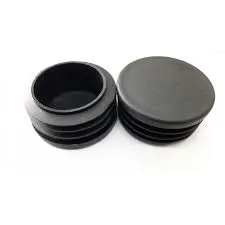Mobile:+86-311-808-126-83
Email:info@ydcastings.com
A Guide to Bronze Casting Techniques and Best Practices for Beginners
How to Cast in Bronze A Step-by-Step Guide
Bronze casting is a time-honored art that dates back thousands of years. The process allows artists to create intricate sculptures, decorative items, and industrial components. Whether you're a seasoned artist or a beginner eager to learn, this guide will walk you through the essential steps of bronze casting.
Understanding Bronze
Before diving into the casting process, it's important to understand what bronze is. Bronze is an alloy primarily made up of copper and tin, though other metals can be included to enhance specific properties. The typical mixture consists of around 90% copper and 10% tin, but variations exist depending on the desired characteristics of the final product. This alloy is favored for its strength, resistance to corrosion, and aesthetic appeal.
Step 1 Designing Your Sculpture
Every successful bronze casting project begins with a strong design. Sketch your sculpture, paying attention to details, proportions, and the overall aesthetic you aim to achieve. If you’re not confident in your drawing skills, you can create a physical model using clay or another malleable material. This model will serve as the basis for the mold.
Step 2 Creating the Mold
Once you have your model, it’s time to create the mold. There are several types of molds, but the most common for bronze casting are clay, silicone, and investment molds.
1. Clay Molds If you're using a large or intricate model, you can create a two-part plaster mold. Encapsulate the original in plaster and allow it to dry, then remove the original. 2. Silicone Molds For more detailed work, silicone molds are flexible and can capture intricate details. This method is suitable for smaller sculptures. 3. Investment Molds Ideal for fine details and a smooth finish, investment molds are made from a mixture of sand and a binding agent. To create an investment mold, cover your original model with the mixture and allow it to set.
Step 3 Wax Pouring
After the mold is ready, it's time to prepare for wax pouring. Melt wax and pour it into the mold to create a wax version of your sculpture. This step is critical as it serves as a prototype for the final bronze piece. Allow the wax to cool and solidify before removing it from the mold.
Step 4 Creating the Investment
how to cast in bronze

Now that you have the wax model, you will create the investment (or shell) around it. This is typically done using a ceramic shell mixture, which offers durability during the casting process. Coat the wax model with the mixture and let it dry. This process might require multiple layers to ensure strength.
Step 5 Wax Removal
Once the investment has fully set, it’s time to remove the wax. This is usually done by heating the mold in an oven, which melts the wax and allows it to drain out, leaving you with a hollow mold ready for bronze.
Step 6 Preparing to Pour
Before pouring the bronze, the investment mold must be preheated. This step helps prevent thermal shocks and ensures a smoother flow of molten metal. Bronze is generally melted in a crucible, using either a furnace or a torch. The melting point of bronze is around 950 to 1,000 degrees Celsius (1,742 to 1,832 degrees Fahrenheit).
Step 7 Pouring the Bronze
With everything in place and the bronze melted, you’re ready to pour. Carefully pour the molten bronze into the investment mold, ensuring it fills all the cavities without creating air pockets. This process requires precision and safety measures to avoid injury.
Step 8 Finishing Touches
After the bronze has cooled and solidified, break away the investment shell. You will now have your bronze sculpture, but it might require further refining. This can include grinding, polishing, and applying patinas to achieve the desired look.
Conclusion
Bronze casting is a captivating blend of art and science that requires patience, skill, and creativity. As you embark on this journey, remember that practice is key. Each piece you create will teach you something new, enhancing your craftsmanship. With dedication and passion, you can bring your unique visions to life in bronze. Happy casting!
-
Why Should You Invest in Superior Pump Castings for Your Equipment?NewsJun.09,2025
-
Unlock Performance Potential with Stainless Impellers and Aluminum End CapsNewsJun.09,2025
-
Revolutionize Your Machinery with Superior Cast Iron and Aluminum ComponentsNewsJun.09,2025
-
Revolutionize Fluid Dynamics with Premium Pump ComponentsNewsJun.09,2025
-
Optimizing Industrial Systems with Essential Valve ComponentsNewsJun.09,2025
-
Elevate Grid Efficiency with High-Precision Power CastingsNewsJun.09,2025











